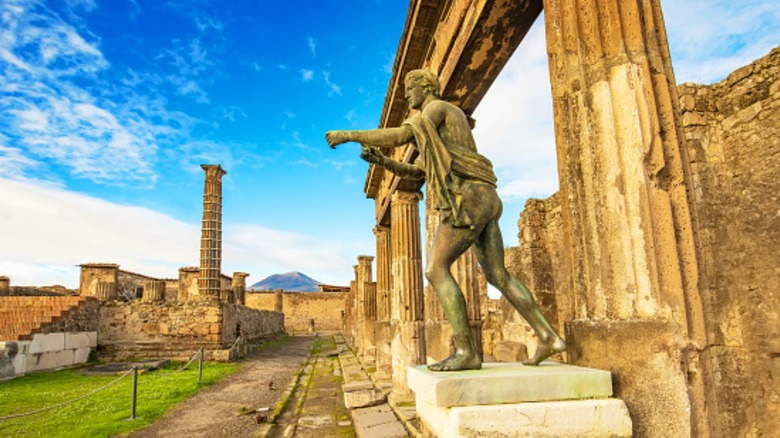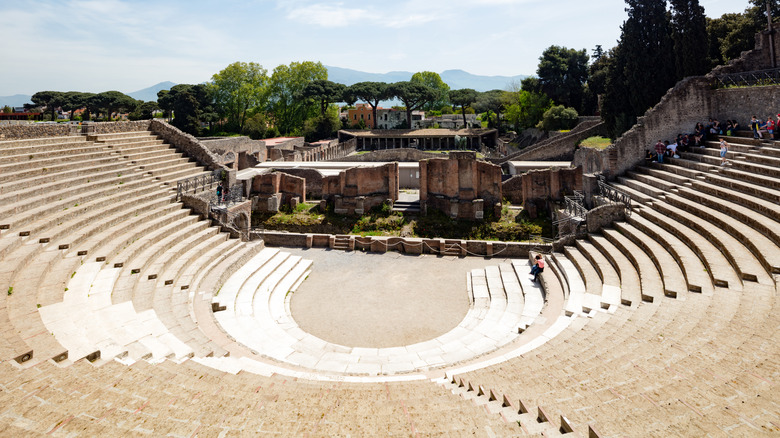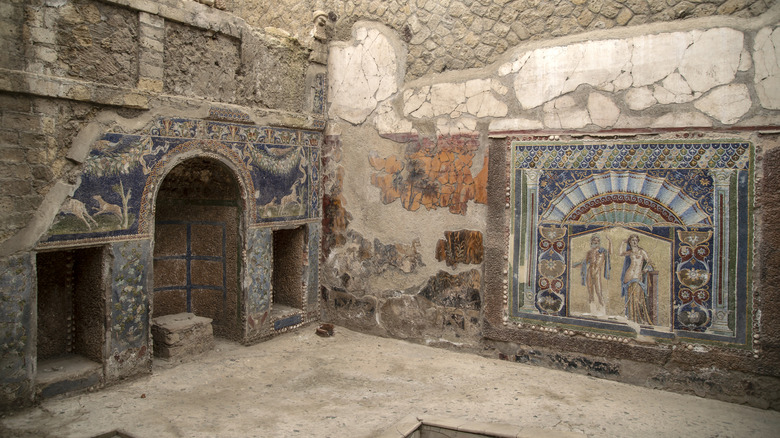Is Pompeii A Tourist Trap Or A Must-See On Your Vacation To Italy?
For many, a trip to Italy is a once in a lifetime vacation destination. Though a country of great natural beauty, with gorgeous beaches, islands, and lakes, Italy is perhaps best known for its culture, history, and proud culinary tradition. However, with so much to explore in Italy it is especially important to separate the truly must-see attractions from the tourist traps.
What about Pompeii, the once flourishing Roman city near the Bay of Naples which is today famous the site of an ancient natural disaster? Today, the Archaeological Park of Pompeii 14 miles south of the city of Naples is a place of great interest to archaeologists and historians, but it is also one of Naples' biggest tourist attractions — and for good reason. In 79 B.C., Mount Vesuvius, a volcano located around five miles from what was the bustling port of Pompeii, erupted, sending ash and volcanic matter high into the air above the city. The eruption was a catastrophe for the 12,000 strong population of Pompeii, which was pummeled with nine feet of debris, killing 2,000 citizens and 16,000 in surrounding areas.
The destruction was recorded by the chronicler Pliny the Younger, whose account remains one of the most visceral of a natural disaster from the period. But what makes Pompeii so valuable as a historical site — and beguiling for visitors — is that the ash preserved much of the city. Having been excavated, Pompeii now offers some of the finest examples of architecture, art, and other artifacts from the start of the first millennium anywhere in the world. The ash also mummified the bodies of many of the volcano's victims, which are viewable at the site.
An insight into Ancient Rome
The Archeological Park is generally very highly rated by tourists, who praise its grandeur and well-preserved attractions. An estimated 2.5 million people visiting each year. During peak season it may be crowded, with long lines to enter. However, it is possible to buy a "skip-the-line" ticket, which, though more expensive, can smooth your journey to the ancient city so you can spend more time exploring.
The archeological site of Pompeii is enormous, constituting the layout of the city as it stood at the moment of Vesuvius' fatal eruption. To explore every nook and cranny it would take around three days. As such, most visitors follow an itinerary to see the site's most famous attractions, soaking in the history of the place in a period of hours.
Top attractions at the site include the ancient city's two theaters, known as the Teatro Grande and the Odeon, the latter of which is an acoustic marvel designed to allow the voices of musicians and poets to carry to the back rows of ancient crowds. Pompeii's amphitheater, built to hold crowds of 20,000, is another attraction that gives a sense of the scale of Roman public entertainments. The Orto dei Fuggiaschi, or Garden of the Fugitives, houses the remains of 13 victims of the Vesuvius eruption, and is an unsettling but thought-provoking must-see. Elsewhere, the Casa del Fauno, or House of the Faun, and the Lupanare, the ancient city's brothel, offer examples of historical art in both high and low cultural contexts. The Foro, or forum, meanwhile, is an insight into the look of the city, with columns and arches remaining of public buildings including temples to Roman gods, the basilica, and the city's market.
Historical alternatives to Pompeii worth seeing
Of course, Pompeii isn't the only site of outstanding historical significance in modern day Naples. A twenty minute drive up the coast from Pompeii stands the smaller but no less impressive Herculaneum, another ancient city that was destroyed by the eruption and preserved by the Vesuvian ash of 79 A.D. First excavated in the 18th century, the Herculaneum stands closer to the center of Naples and may make for a more accessible option than Pompeii for some visitors, though the two attractions are complementary, and it is worth making a visit to both.
Whereas the Pompeii Archeological Park's vast scale is perfect for giving visitors a sense of what it was like to live in an Ancient Roman city, the Herculaneum is especially well preserved, giving a breathtaking insight into the interior of 2,000-year-old domus homes, and featuring many beautiful artworks, fixtures and fittings, homewares, and jewelry recovered from the site over the last two centuries. The two sites are operated by Visit Pompeii, which offers guided tours of both. Their website also offers directions for public transport and visiting by car, but be sure to check out our general tips for taking transport in Italy.


